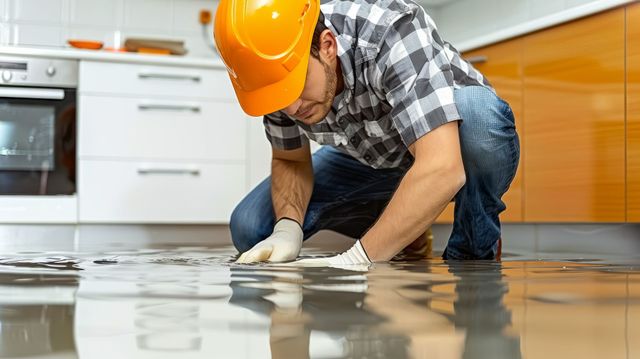Owning a home in Salt Lake City can be a dream—until you discover a soggy ceiling or a flooded basement. Water damage doesn’t wait for a convenient time, and for new homeowners, it can be overwhelming. You might be wondering: What happens next? Who do I call? How bad is it, really?
If you’re facing water damage for the first time, don’t panic. Here’s a straightforward guide to help you understand what professional restoration looks like, why it matters, and what you can expect every step of the way.
What Causes Water Damage in Salt Lake City Homes?
Salt Lake City might be known for its dry climate, but that doesn’t mean homes are immune to water damage. In fact, residential water issues here often come from:
- Burst or frozen pipes during winter cold snaps
- Appliance leaks (from various sources, could be from water heaters, dishwashers and/or washing machines)
- Roof leaks after snowmelt or spring rain
- Basement flooding due to poor drainage
- Sewer backups from older plumbing systems
Even a small leak can cause major problems over time—mold growth, warped floors, peeling paint, and structural weakening. That’s why fast, professional action is key.
The Restoration Process: Step-by-Step
Understanding the process can help ease some of the stress. Here’s what typically happens when you bring in a water damage restoration team:
1. Emergency Contact and Inspection
Most reputable companies offer 24/7 emergency service. Once they arrive, technicians assess the damage using moisture detectors, thermal cameras, and a visual inspection. This helps them determine the water category (clean, gray, or black) and how far the damage has spread.
2. Water Removal
Using industrial vacuums and pumps, pros remove standing water quickly. The longer water is left unattended, the more extensive the damage becomes. This stage also involves moving furniture and removing wet materials like rugs and drywall if needed.
3. Drying and Dehumidification
After the water is out, drying begins. Commercial-grade air movers and dehumidifiers help draw moisture out of walls, floors, and ceilings. This step is crucial for preventing mold.
4. Cleaning and Sanitizing
Depending on the water source, this step can be light or extensive. Teams disinfect affected surfaces and materials to eliminate bacteria, odors, and potential contaminants.
5. Repair and Restoration
The final phase restores your home to its pre-damage state. That might include:
- Replacing drywall or insulation
- Painting
- Installing new carpet or flooring
- Fixing plumbing or roofing issues
Some companies even handle reconstruction for major repairs, coordinating all aspects so you don’t have to juggle contractors.
What to Look for in a Restoration Company
When you’re new to homeownership, hiring a service can feel intimidating. Here’s what matters most when choosing a restoration team:
- Licensed and insured: Always ask.
- IICRC certified: This is the industry gold standard.
- Local experience: Look for a company that knows the Salt Lake City climate and housing trends.
- Clear communication: You want someone who explains things in plain language.
- Insurance support: Good companies will help document damage for your claim.
How Long Will It Take?
Timeframes vary based on how severe the damage is. A minor incident may only take a few days. Major water damage with structural repairs could stretch over weeks. Your restoration company should give you a clear timeline early on and keep you updated throughout the process.
What Will It Cost?
Pricing depends on:
- The extent of the damage
- Type of water (clean water vs. sewage, for example)
- Size of affected area
- Materials and labor needed
Many homeowners insurance policies cover water damage, especially if it results from a sudden and accidental cause. Restoration teams often work directly with insurers to streamline billing and get your claim processed faster.
Tips for First-Time Homeowners
If this is your first major repair job as a homeowner, here are a few bonus tips:
- Act fast: Don’t wait to see if things dry out on their own.
- Take photos: Before cleanup, document everything for your insurance.
- Keep receipts: Any related costs might be reimbursed.
- Ask questions: A good team will walk you through every step.
Why You Shouldn’t Handle It Alone
Water might look like it’s gone, but hidden moisture can linger behind walls, under flooring, or inside your HVAC system. Mold can begin growing within 24-48 hours. Without professional tools and training, you risk missing critical issues that lead to much bigger problems later on.
That’s where calling in experts in water damage restoration Salt Lake City really pays off. They don’t just clean up—they restore your home safely and completely, with as little disruption as possible.
Final Thoughts
Water damage can be a tough surprise for any homeowner, especially if you’re new to the game. But with a reliable restoration team, the process becomes manageable. You’ll not only get your home back, but you’ll also gain peace of mind knowing it was done right.
Take action quickly, choose the right professionals, and don’t be afraid to ask for help. Your home deserves it—and so do you.









